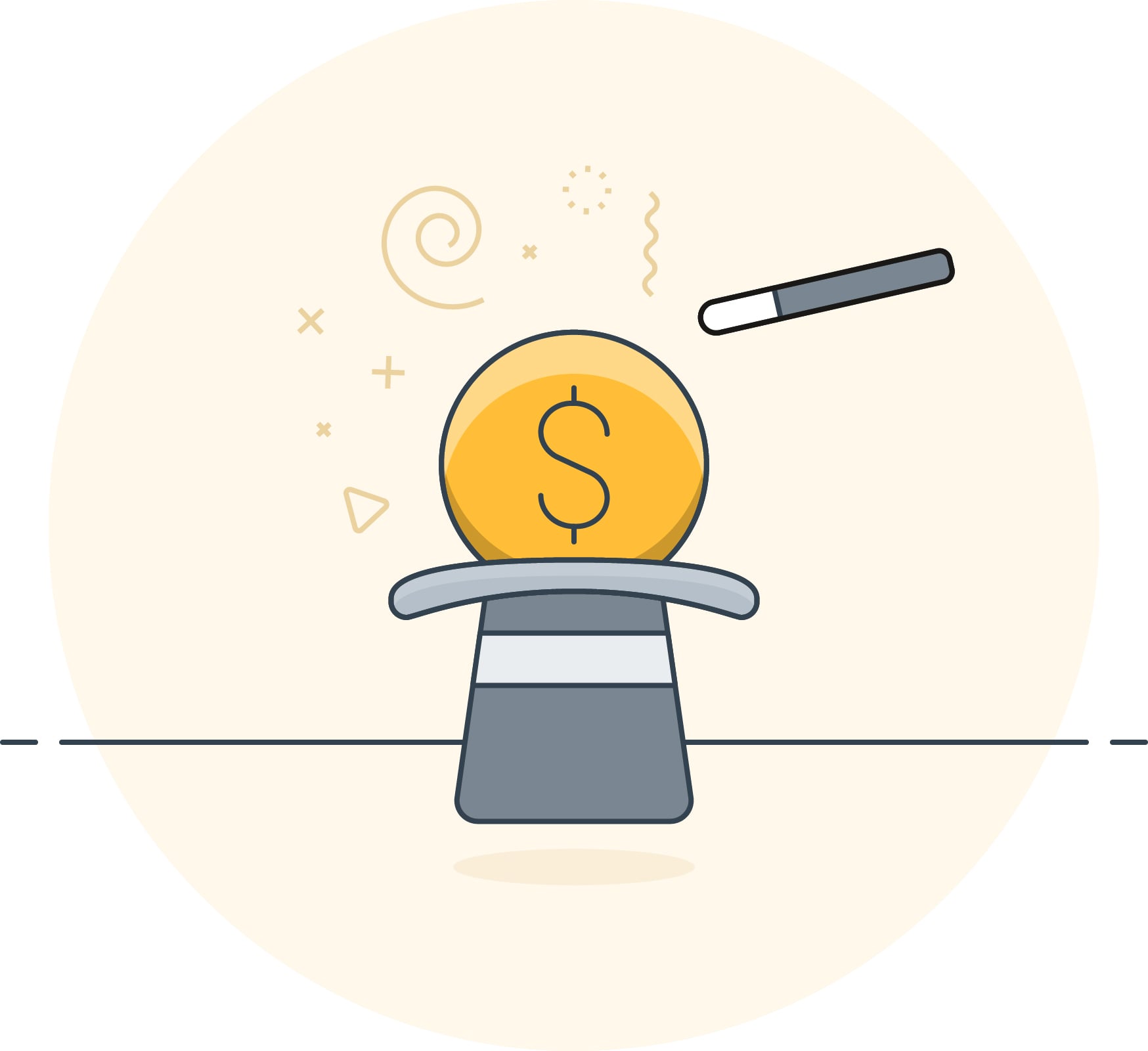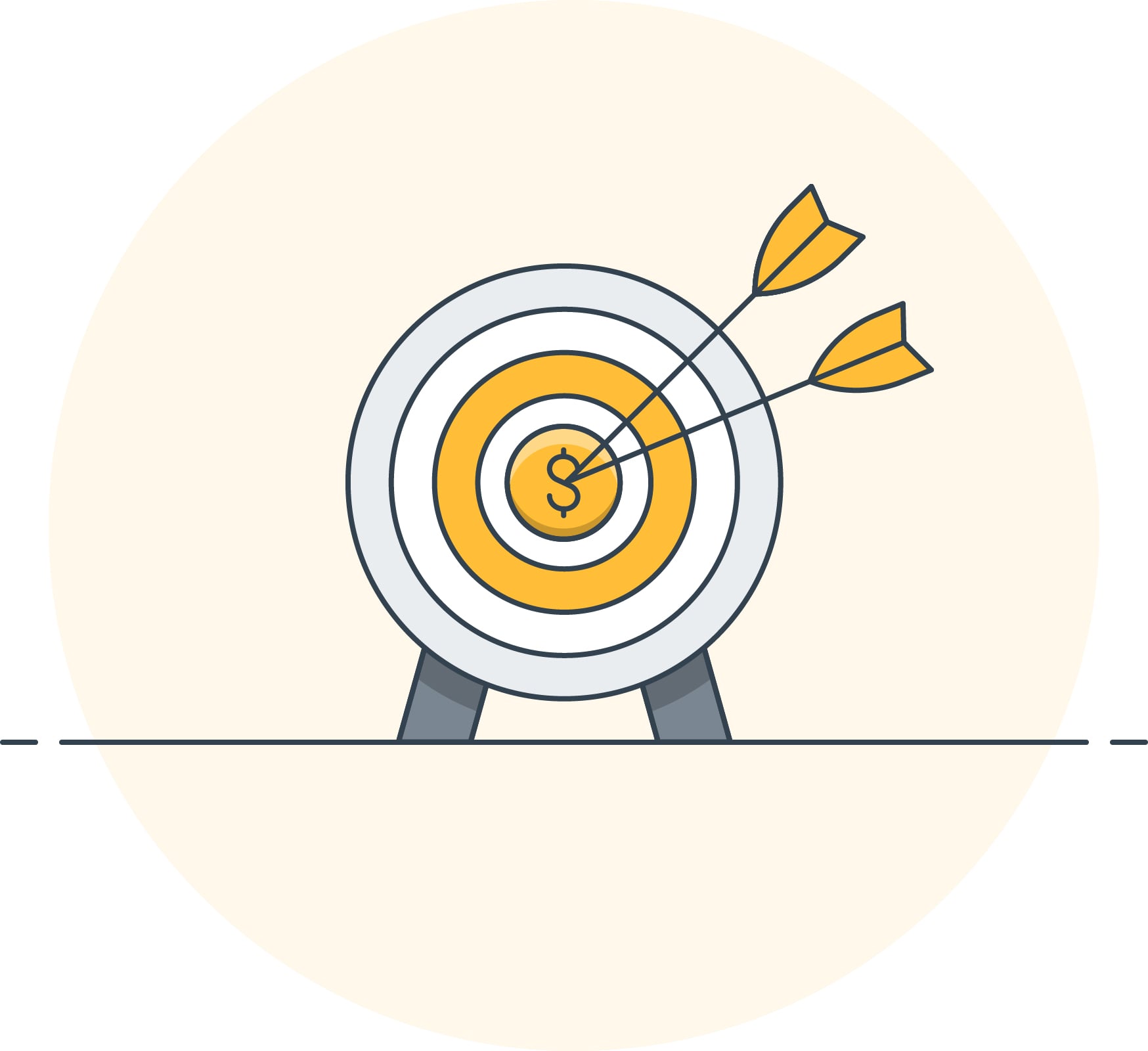The success of a business is dependent on a whole host of interconnected ingredients. Obviously, you want to sell something that people want to buy. And, you need to get it in front of them.
Let’s say you’ve just started an online store and have demand and marketing in the bag. You’ve entered the market and you’re only stuck on one thing—finding the right pricing strategies.
There is a lot of strategy that goes into pricing. It isn’t just a toss at the dartboard. There are even pricing psychology and cognitive biases to consider, which we’ll be discussing in a few.
You’ve got your bottom line to worry about, sure. But, it comes down to a lot more than just covering your expenses and (hopefully) drawing a profit.

Lemons being sold in the produce section at the supermarket don’t cost the same as those sold in fruit stalls, and one of the reasons behind this difference is pricing strategy.
eCommerce Pricing Strategies
- Markup pricing
- Keystone pricing
- Competitive pricing
- Penetration pricing
- Value-based pricing
- Price skimming
- Vendor pricing
- Psychological pricing
What is pricing psychology?

Pricing psychology is the marketing strategy that focuses on the psychological impact of certain pricing strategies towards a target audience. To maximize a product’s ability to sell, it’s important to consider pricing psychology to fully take into consideration the buyer’s perspective throughout the consumer journey.
With the prices you’ve set for your products, will your audience think they’re too cheap or expensive? Does the time of year have something to do with the demand? Will a few decimals have an impact on the audience?
So let’s talk about numbers and psychology. Some of the pricing strategies involve some amount of psychological magic to make that purchase more likely.
Whole numbers are simple and clean but aren’t well-suited to drive sales. Which is why you don’t see prices in whole numbers. Enter a decimal and two extra digits, and watch the magic happen.
Learning these pricing strategies and placing them on your optimized product pages will surely lead to more sales.
Charm pricing: Why prices end in .99
This special price ending strategy is often called charm pricing. It’s the reason your pack of gum costs $1.99 and not $2.
The human brain sees that initial 1 and makes the mistake of assuming the pack of gum is essentially just a dollar, instead of double that. This one-cent difference accounts for a huge boost in conversion rate.
While it is a change to the last digit, the true benefit seems to be realized by the change of the left-most digit. So, that $20 changing to $19.99 will have a much more dramatic effect than the $19.99 changing to $19.95.
Odd-even pricing
If you dig in a little deeper, you can ally yourself with one of two charm pricing camps—the odds and the evens. Specifically, we’re talking about the quality of that last digit in your product’s price.
Originally, it has been said that the purpose of pricing products down a few cents was to force cashiers to open the register and therefore record the sale. Otherwise, they’d easily be able to pocket that whole dollar amount without bothering with the register.
Many retailers mainly employ odd pricing, whereas a few use even pricing. The difference in conversion between these two strategies—aside from the shift from a whole number—is minimal.
The price endings mostly just signal some internal retailer price markdown system. Rather Be Shopping goes into great detail on several of these retailers’ codes.
More psychological pricing tricks
The magic doesn’t stop at lowering your price by a few cents. Marketing has always taken its cues from the learnings of human psychology. Here are a few more pricing tricks that have been discovered and used extensively over the years.
- For higher prices, remove the comma to make it seem lower.
- Expensive products should be offered in installments, which anchors them to the smaller price point.
- Offer free shipping on orders of a minimum size to increase average order size and reduce cart abandonment.
- Use smaller font size for prices to reduce visual magnitude (opposite for discounts).
- Outside of the numbers themselves, you can also drive urgency for products by offering limited-time deals.
But, truly there are so many pricing tactics for driving customers to buy more of your stuff. Obviously, your first step is to have a great business and a great product. From there, you can use psychology to increase revenue and grow your small business.
The pricing of your wares doesn’t have to rely upon psychological tricks though. There are many strategies that are much more straightforward.
eCommerce pricing strategies

Pricing products is an art as much as a science. While there are strategies that employ simple math, others require more of a reading of the market to find the right numbers to land on. And if you’re interested in how these pricing strategies work with your website navigation, don’t forget to read the Sendle blog on eCommerce UX!
The pricing methods you choose to use will differ by what you are selling and how much you want to put into it. Here are some of the most common pricing strategies out there:
1. Markup pricing (or cost-plus pricing)
One of the most basic pricing strategies is markup (or cost-plus) pricing. Add up all of your costs for a product, then tack on your profit margin—be it 5% or even 20%.
This strategy is exceedingly simple. You don’t have to conduct customer research or do an in-depth analysis of the market. Just some simple math. The name, cost-plus, says it all—your costs plus your margin.
This is not to say that there aren’t cons to this strategy. There are always cons. With cost-plus pricing, profits aren’t certain to remain consistent because costs may change.
You could find yourself at a loss without changing your pricing to account for rising costs. And price increases don’t often go over well with consumers.
2. Keystone pricing
Another simple pricing method that uses a similar tactic as markup pricing is keystone pricing. Simply double your cost of goods to find the product price. This does not include the various costs associated with your business, so the markup isn’t as steep as it may seem.
So, if it cost you (the retailer) $50 for a product, you’d price it at $100 via keystone pricing. And there you go! While big box stores often don’t price according to this strategy, small brick-and-mortar shops that go the extra mile to personalize the shopping experience can manage the higher prices.
You’ll see keystone pricing most often in retail clothing, accessories, and shoes. It’s a simple and reliable strategy for these types of sellers.
Yet, simplicity doesn’t always make for the best pricing strategy.
Some products do just fine with this model and many retailers need to markup this much to compete. But other products, like computers and small electronics, operate on much thinner margins and consumers would not tolerate the higher price.
If you have a variety of products, this strategy may work for some but not all of your items. This markup can even trend too low for certain upscale products. Just research on which industries or types of products this specific pricing strategy would work in.
3. Competitive pricing
Sometimes you do your homework by looking at the answers others came up with. This is an apt analogy to competitive pricing.
Simply, competitive pricing (or market-oriented pricing) bases prices off of existing products on the market. If you know your market and your competitors, you can find where your pricing should land generally.
With this knowledge, you can set your pricing below the competition to signal affordability and drive conversion for those shopping around or looking to change it up. Or, you can set your pricing above your competition (known as prestige or premium pricing) to convey a high-end quality brand (any iPhone users out there?).
While this strategy can net you more shoppers and keeps you in line with your competitors, it is based on the assumption that your competitors are pricing correctly and is not based on actual costs.
4. Penetration pricing
When new to the scene, you want to make a big splash to announce your existence. One way to do this is with ridiculously low prices—prices too low to keep a roof over your head. You might even want to offer free samples to your first few customers. The goal isn’t to drive yourself into poverty but instead to disrupt the market and bring in a healthy crop of customers.
This temporary strategy can get you the attention you need before setting your prices up to where they need to be to pull in a profit. Make sure you have the cash to weather the hit of operating at a loss for this period.
Once you’ve developed great rapport with your new customer base, you can set up your regular pricing (based on one of the other pricing strategies in this post) and start reaping the benefits of your quick market entry.
5. Bundle pricing
Customers love a deal and small businesses love to increase average order values. That’s why bundle pricing is such a great strategy for pricing parts of your inventory. Essentially, you sell multiple complementary products at a price that is lower than they would be sold separately.
You are simultaneously offering your customers a better (actual and perceived) value while increasing their shopping cart size. Further, your customers will purchase items that they likely would not purchase individually.
This model is common with beauty and food products, where complementary items can be bundled together for a better deal (and higher average order value for the seller). Gift sets are a perfect example. Outside of shippable products, you see this with combined beauty treatments (mani-pedi) or in fast food with kid’s meals and combo deals.
This is a great strategy to use alongside other pricing strategies in your store. The key to bundle pricing is highlighting its value compared to your a la carte offerings.
If you find success with bundle pricing on items that customers keep coming back for, you might consider moving to a subscription model to cash in on that recurring revenue stream.
6. Value-based pricing
Really great businesses put in the effort to really understand their customers. And you’ve got to really put in the work to understand your customers in order to rightly execute value-based pricing.
This pricing strategy allows you to set pricing based on what your customer is willing to pay. Know the value of your product to your customer and there’s your price. But, research is key and you’ve got to do a lot of it.
With this system, you’ll come out knowing a great deal more about your customers and be able to provide them with excellent customer service. This strategy will involve a bit of competitive pricing research as well as the math to ensure your margin will be sufficient.
7. Price skimming
This strategy is largely used by purveyors of tech products. New products start off at a high price based on their novelty, capitalizing on the excitement of the initial reveal. Somewhat similar to value-based pricing, the initial price is set to the maximum that customers will bear.
As the novelty and excitement wear off, you lower the price to attract the more price-sensitive customer set. Early adopters buy-in at the high watermark, while those who can wait will pay a much lower price (you see this a lot in fashion at the release of a new season).
While this strategy allows for a higher ROI and can elevate your brand image (think Apple), you also risk angering your loyal early adopters and must always watch your back for hungry competitors.
8. Vendor pricing
If you are reselling products, you may have a clear floor for pricing certain items. Vendors keep all of their reseller customers happy by maintaining an MSRP (manufacturer suggested retail price) or MAP (minimum advertised price).
These dictate what price your shop should advertise their products for, but doesn’t necessarily bar you from selling it for less than that. For the manufacturer, this helps them maintain their product’s implicit value and avoid a downward spiral of price cuts by competing retailers.
9. Psychological pricing (or charm pricing)
Now, back to charm pricing.
As with a lot of marketing, your prices affect your customer psychologically—down to the last digit, in fact. While we’d love to assume that all of our decisions are made rationally, the fact is that our behavior is, to some degree, determined by the little things.
Just as compelling clickbait headlines encourage increased traffic, so do particular price endings affect retail sales. This is why it is so heavily used throughout the industry.
You can’t step into a major retail store without seeing psychological pricing in action. It’s the reason that you don’t see a price tag that reads ‘$10’ but instead ‘$9.95’. It seems cheaper. And the data backs that up.

Give your customers a great shopping experience through fair and attractive pricing strategies
Go forth and price smartly

Equipped with this rich knowledge, you can now feel empowered to make good decisions about how you price your stuff.
Don’t settle for low margins if the market will hand you more cash! Also, don’t lose sales by assuming you need to price high. Find that perfect spot in the middle to keep your customers hooked!
Another great way to add value to your brand is by shipping sustainably with Sendle. Sendle is a 100% carbon neutral shipping company that helps small businesses become sustainable with every package sent. And in terms of pricing, Sendle is your low-cost option to grow your business while doing the planet a favor!

